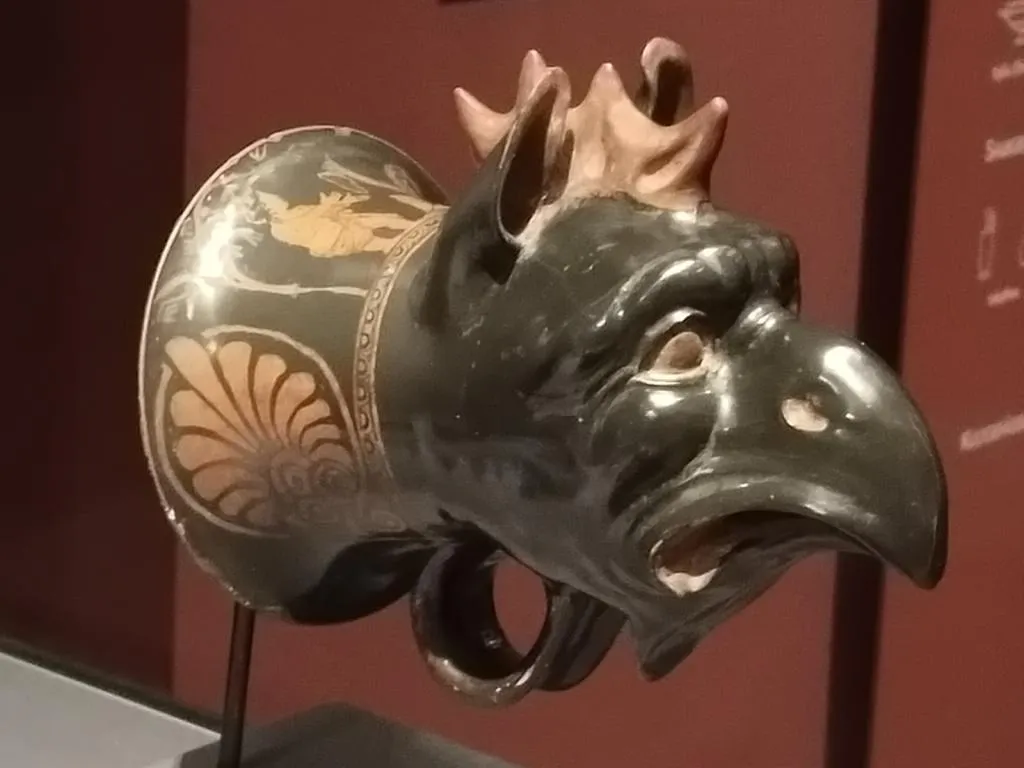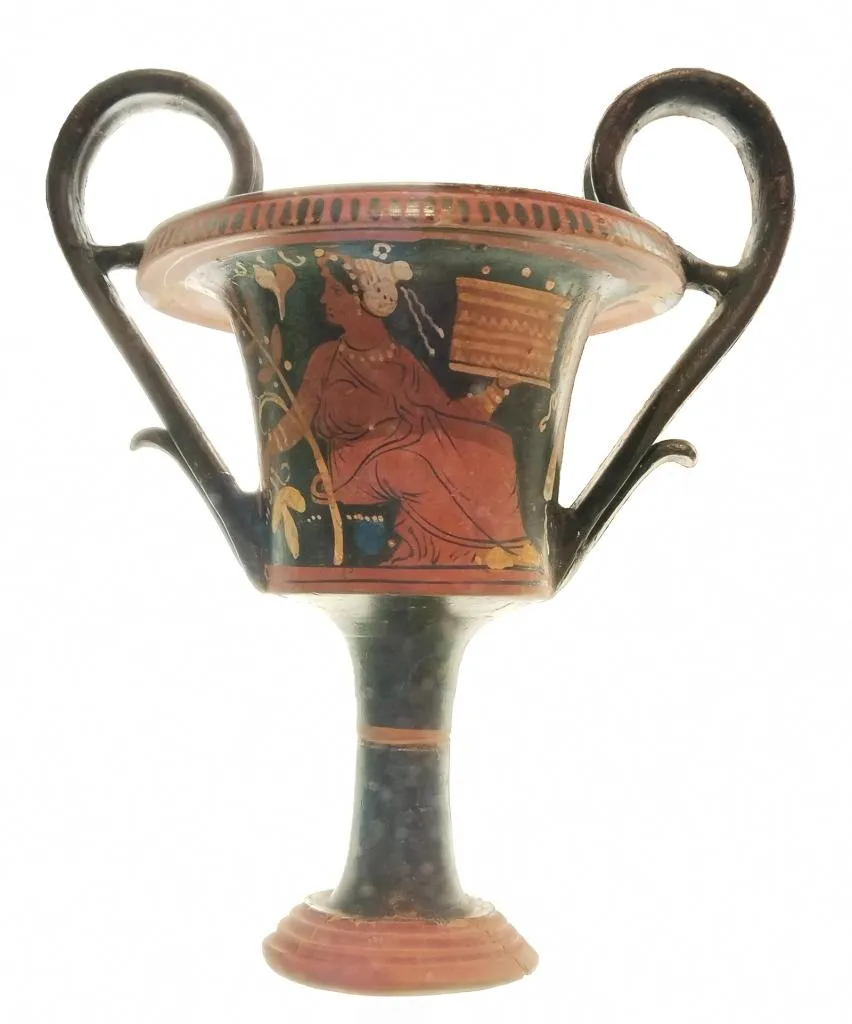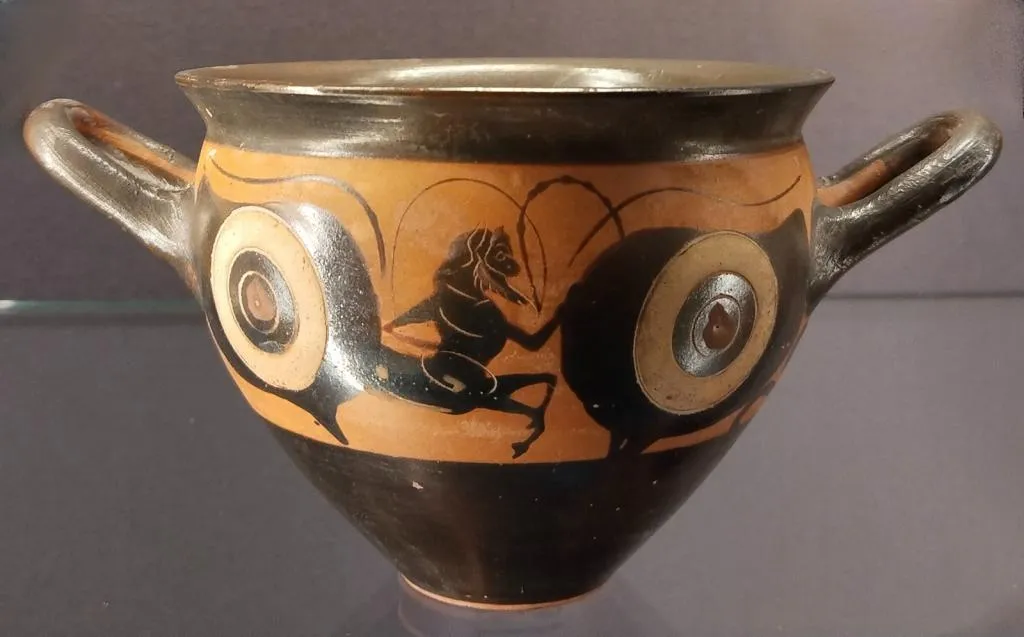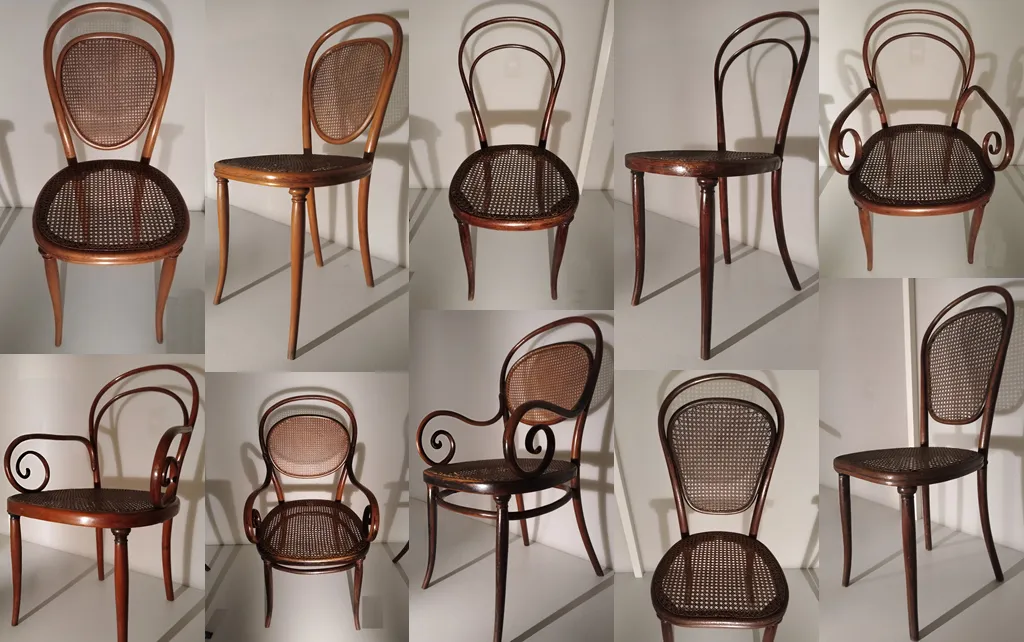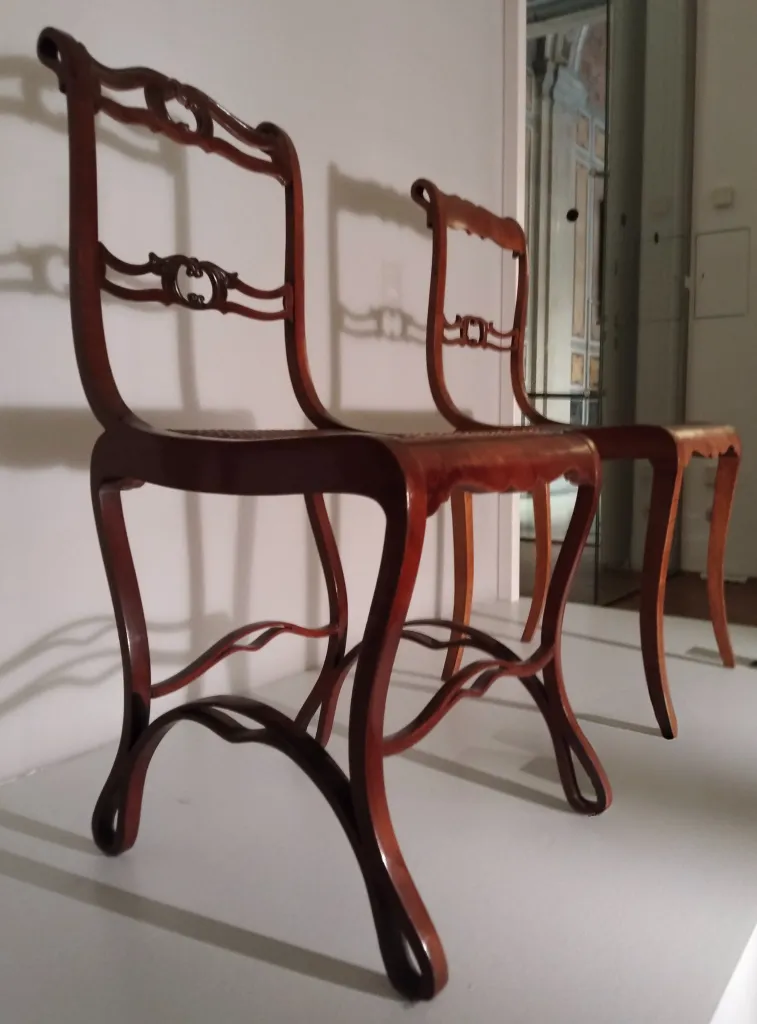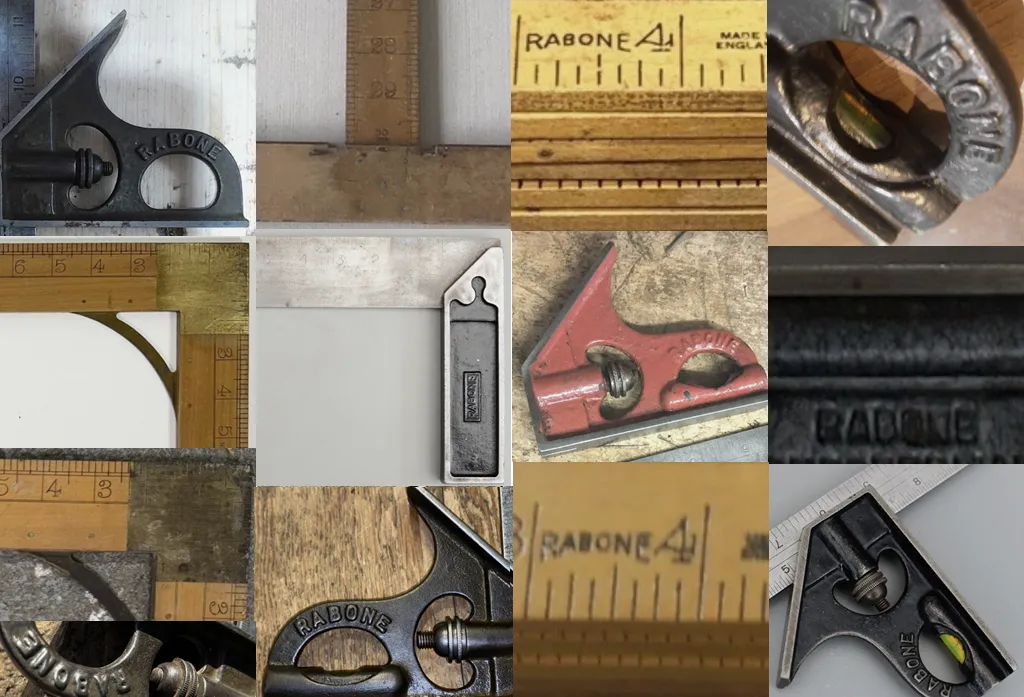Kylix
The kylix was the ancient Greeks’ favorite wine cup—elegant, wide, and perfectly shaped for reclining at lavish drinking parties. More than just a vessel, it blended function, art, and social ritual in one iconic form.
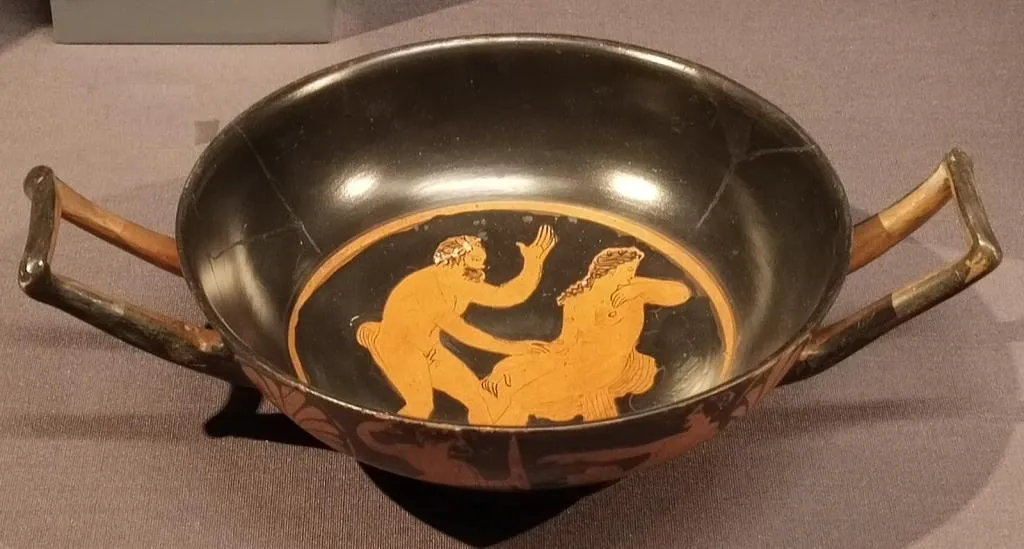
Source: by Stable MARK - own work.
Discover the fascinating world of ancient Greek kylixes—wine cups that were as artistic as they were functional. In this article, you’ll explore their purpose, meaning, design, and history—brought to life with 19 stunning images showcasing different styles, scenes, and craftsmanship from across centuries.
Table of Contents
What Is a Kylix?What Was a Kylix Used For?What Does the Name “Kylix” Mean?How Do You Hold a Kylix?Who Used the Kylix?How Big Is a Kylix?What Does a Kylix Look Like?What Were Kylikes Made Of?Where Is the Theseus Kylix?What Is a Kylix?
A kylix is one of the most iconic drinking vessels from ancient Greece, known for its broad, shallow bowl and horizontal handles. More than just a cup, it was a key part of ancient social life. Here's a deep dive into the kylix and answers to the most common questions.
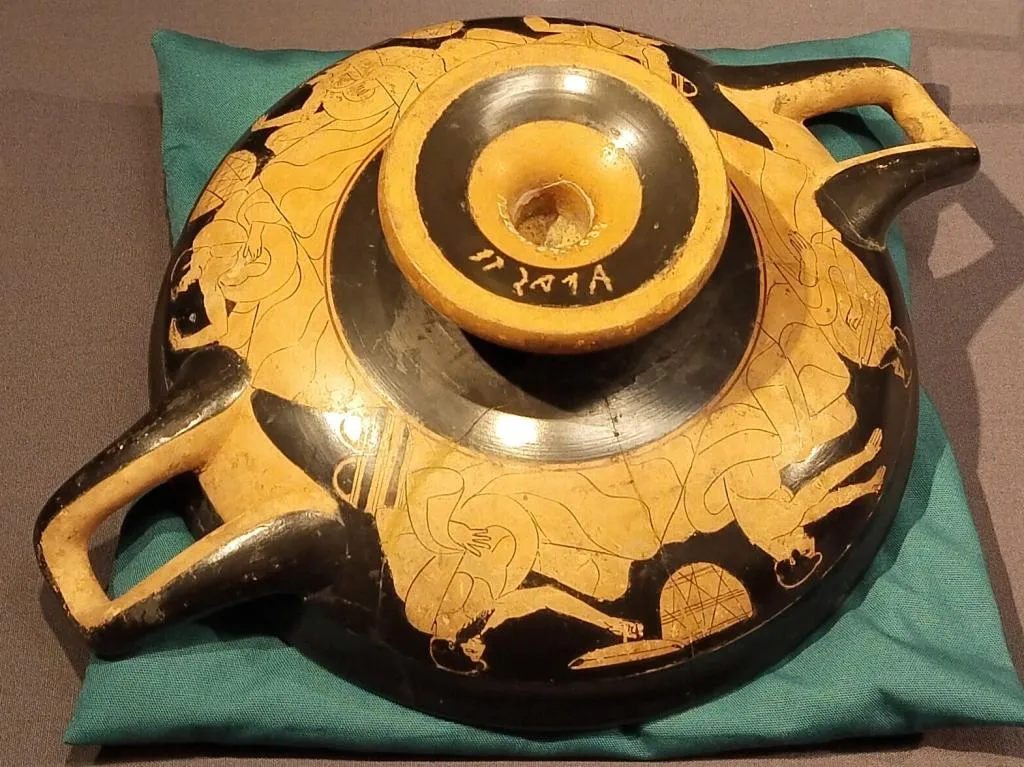
Source: by Stable MARK - own work.
What Was a Kylix Used For?
A kylix was primarily used for drinking wine during Greek symposiums — formal gatherings where men reclined on couches, discussed politics, philosophy, poetry, and enjoyed entertainment. The shape of the kylix was practical for reclining guests, allowing them to drink comfortably without spilling.
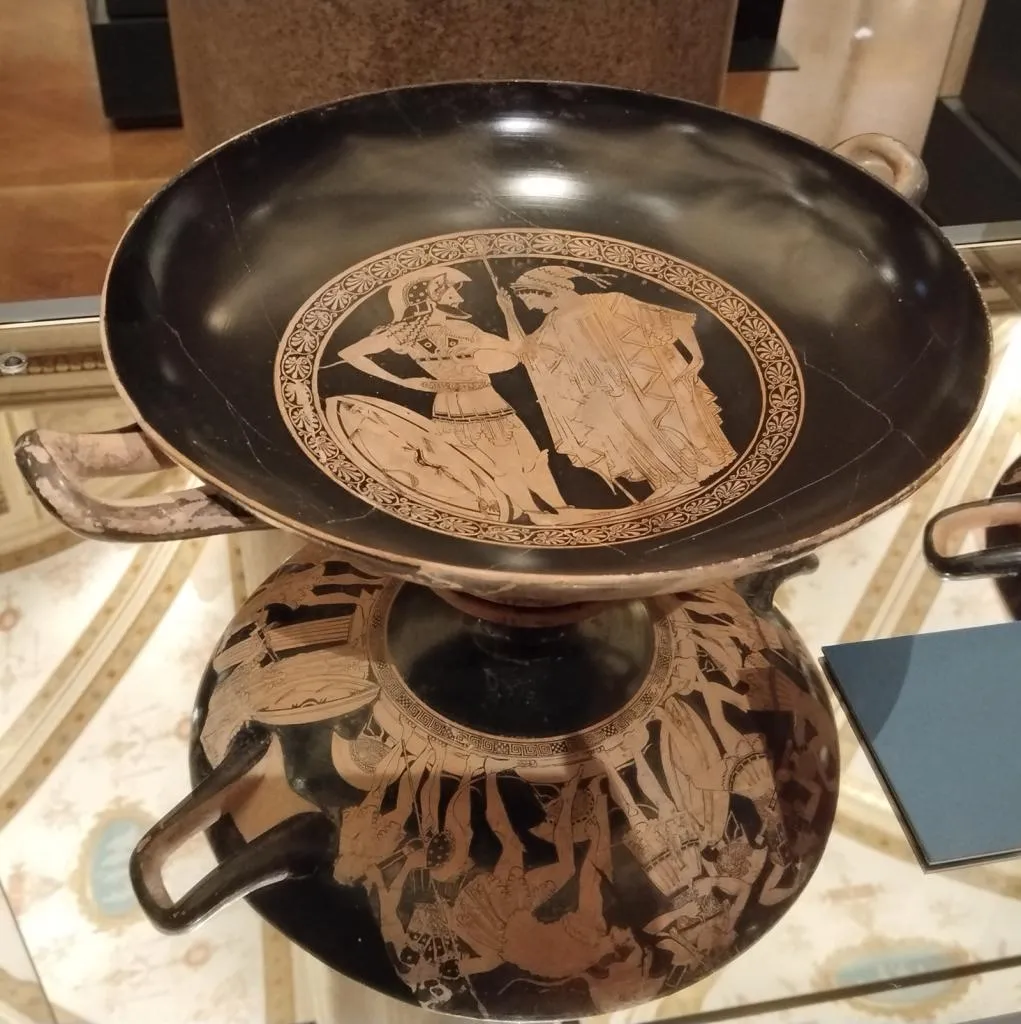
Source: by Stable MARK - own work.
It also played a role in drinking games like kottabos, where guests flung wine dregs at a target for fun.
What Does the Name “Kylix” Mean?
The word kylix (Greek: κύλιξ) literally means “cup” in ancient Greek. It could also describe the cup-like shape of a flower. It's related to the Latin calix, which also means cup, and may have older, non-Indo-European roots.

Source: by Stable MARK - own work.
So, it wasn’t just the name of a single object, but a term for a general type of drinking vessel with a broad, shallow bowl and two horizontal handles.
How Do You Hold a Kylix?
A kylix was typically held by one of its two side handles. The wide, flat bowl made it easy to hold with one hand, even while reclining.
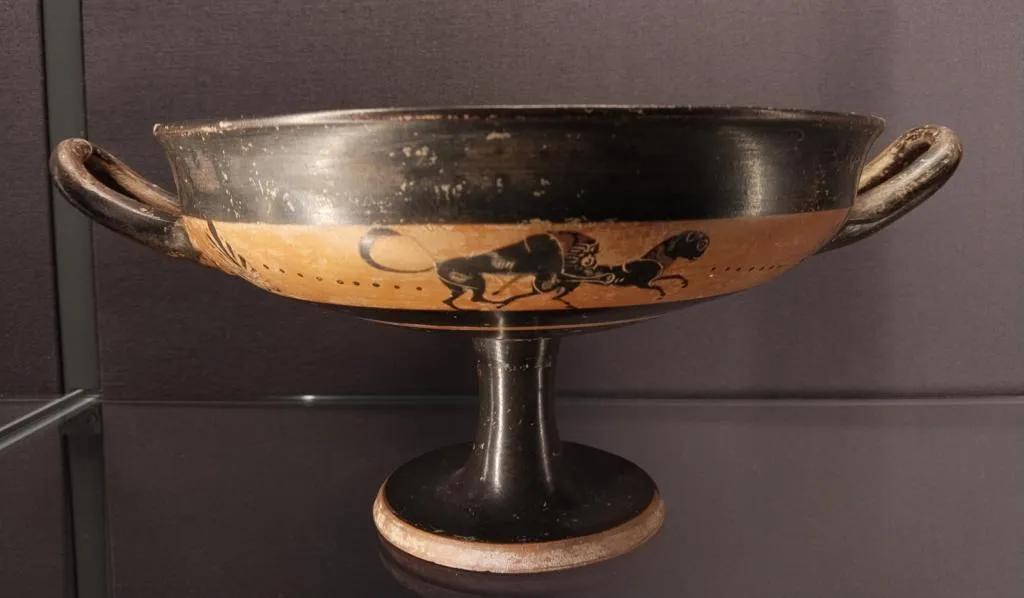
Source: by Stable MARK - own work.
During kottabos, players would hook a finger through the handle to flick wine from the cup at a target. The shallow design helped control the liquid while still giving a wide surface for decorative artwork.
Who Used the Kylix?
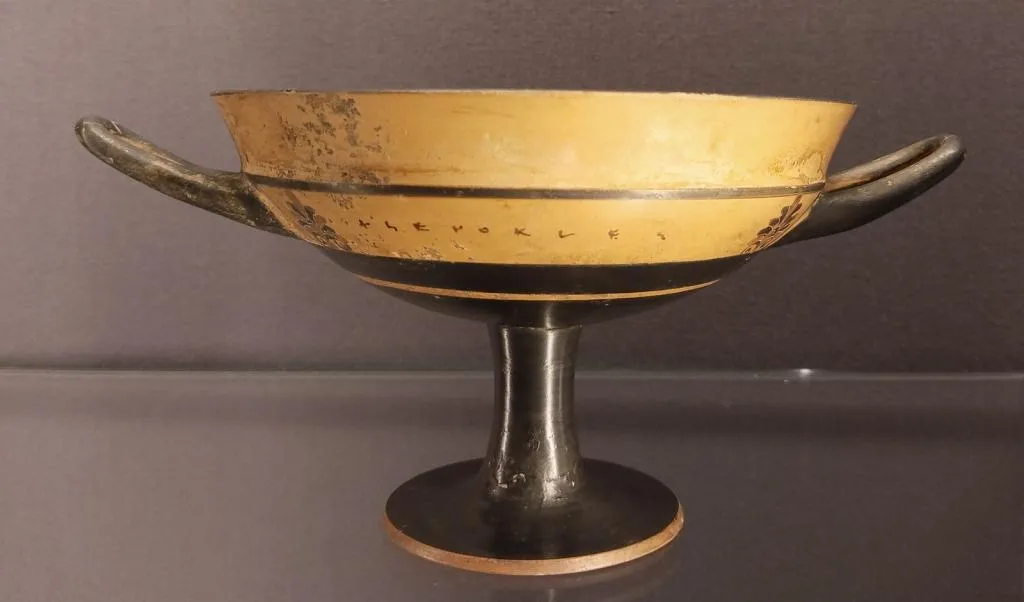
Source: by Stable MARK - own work.
Kylikes were used by Greek men at symposiums, often the elite class. These drinking parties were social events tied to male bonding, conversation, and cultural performances.

Source: by Stable MARK - own work.
Slaves, usually young boys, served the wine in kylikes. The guests themselves could be poets, politicians, philosophers, or aristocrats. Women typically did not attend symposiums, except for courtesans or entertainers.
How Big Is a Kylix?

Source: by Stable MARK - own work.
The size of a kylix varied, but most had a diameter of 20–30 cm (8–12 inches) including the handles. The bowl itself was quite shallow and could hold around 200 to 400 ml (7–13 oz) of liquid — perfect for sipping wine slowly throughout the evening.

Source: by Stable MARK - own work.
Some kylikes were larger or more decorative, depending on their purpose and status of the owner.
What Does a Kylix Look Like?
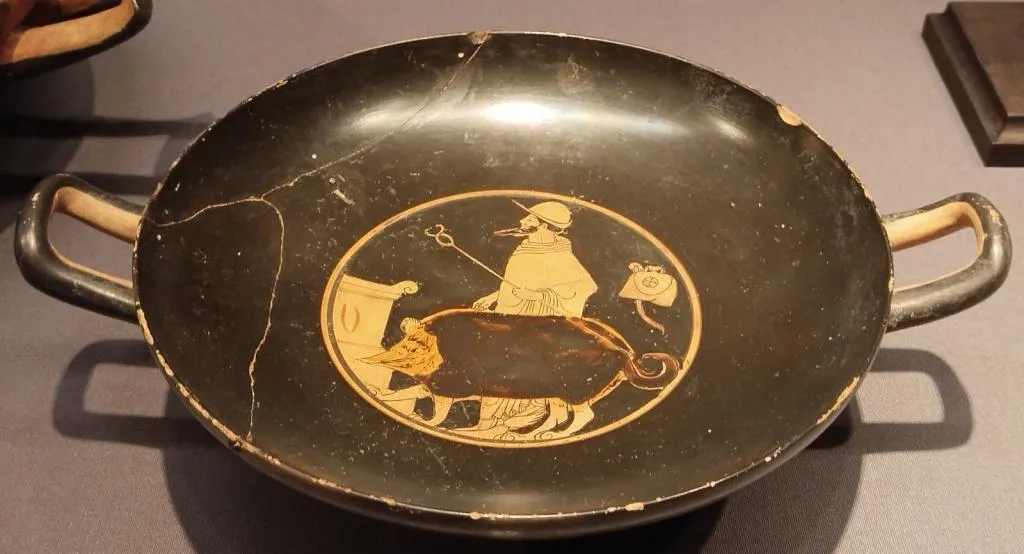
Source: by Stable MARK - own work.
A typical kylix has:
- A shallow, circular bowl
- A short or tall stem
- Two horizontal handles
- Interior decoration (tondo) often hidden at first under wine
- Exterior artwork showing gods, athletes, dancers, or humorous scenes
Kylikes came in different shapes like Type A, Type B, or Little-Master Cups, with slight variations in lip, stem, and decoration.
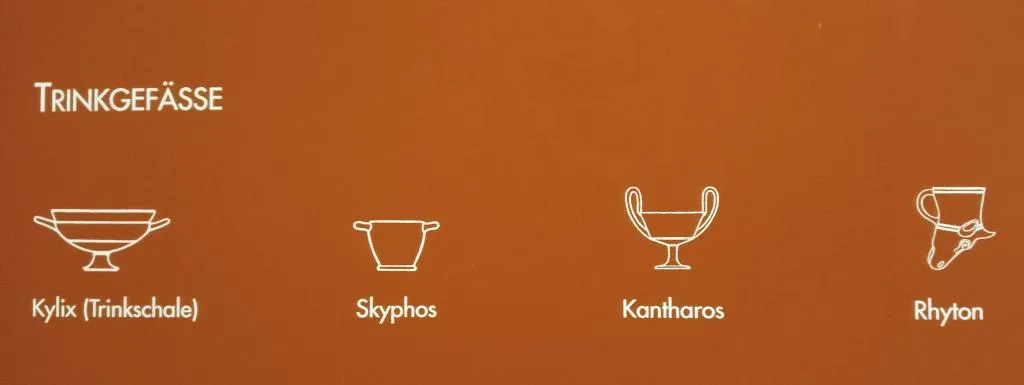
Source: by Stable MARK - own work.
This image from the Kunsthistorisches Museum (KHM) Vienna clearly explains the four main types of ancient Greek drinking vessels: Kylix, Skyphos, Kantharos, and Rhyton. Each had a specific purpose in banquets and rituals, and you can explore them in detail in dedicated articles.
What Were Kylikes Made Of?
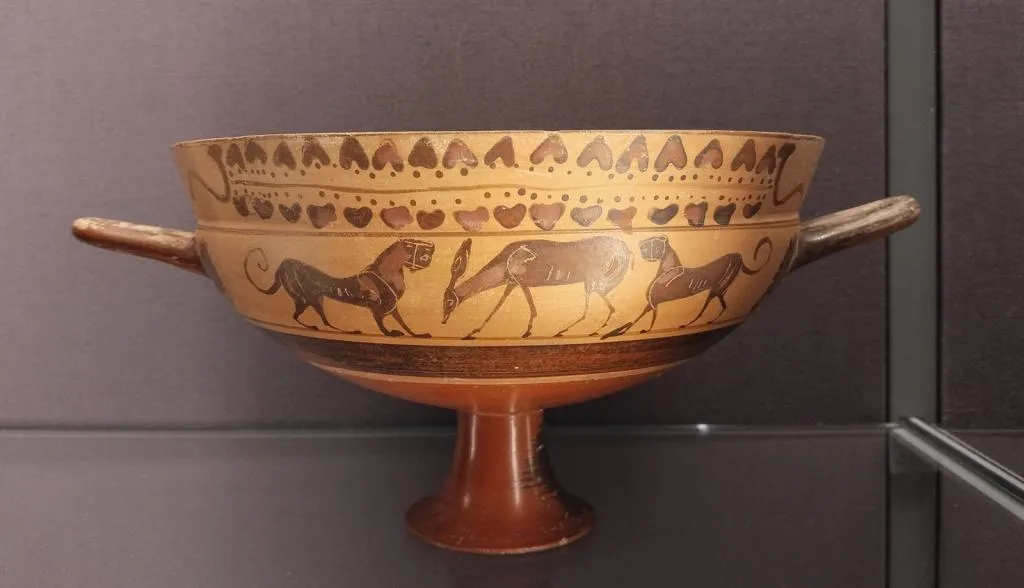
Source: by Stable MARK - own work.
Most kylikes were made from fired terracotta (ceramic clay) and decorated using:
- Black-figure technique (figures in black silhouette, details incised)
- Red-figure technique (figures in red with painted black background)
Some simpler kylikes were plain black without decoration, while others were finely painted with elaborate scenes of mythology, daily life, or erotic imagery.
Where Is the Theseus Kylix?
The Theseus kylix, one of the most famous examples, is housed in the National Archaeological Museum of Madrid, Spain.
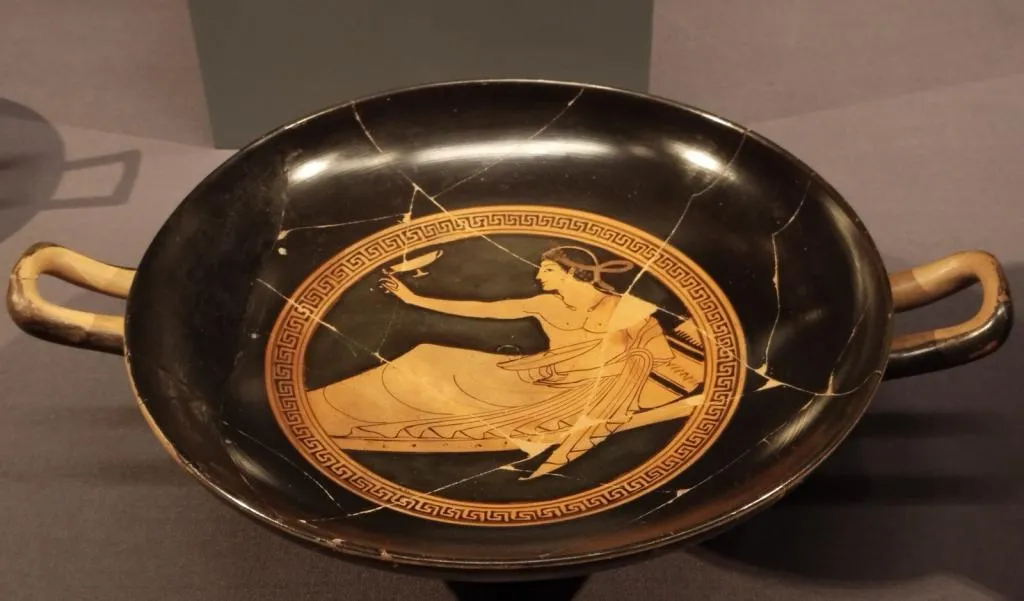
Source: by Stable MARK - own work.
It features Theseus battling the Minotaur — a classic mythological theme — painted in the black-figure technique. The artwork is detailed and framed in a tondo (the circular interior field), visible only as the wine is consumed.

Source: by Stable MARK - own work.
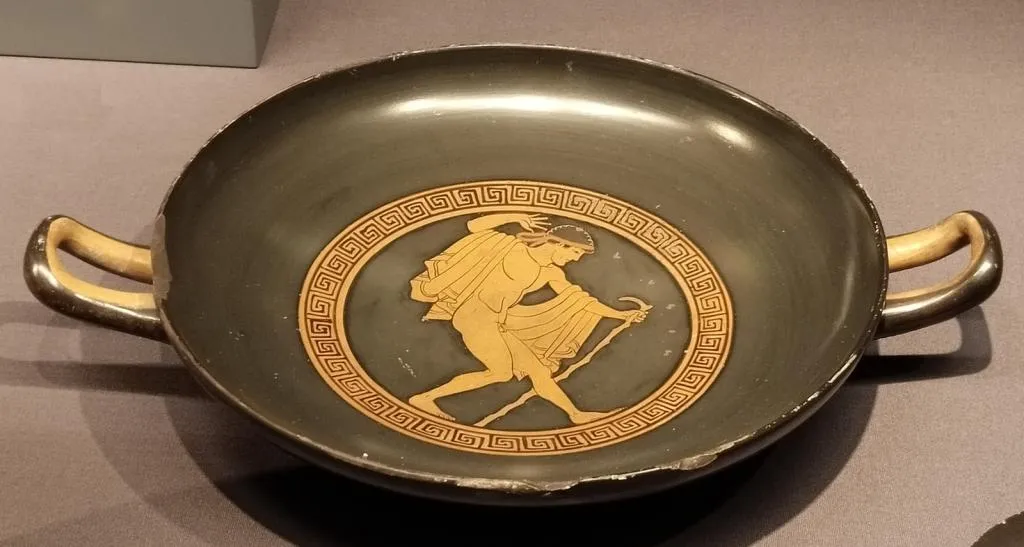
Source: by Stable MARK - own work.

Source: by Stable MARK - own work.
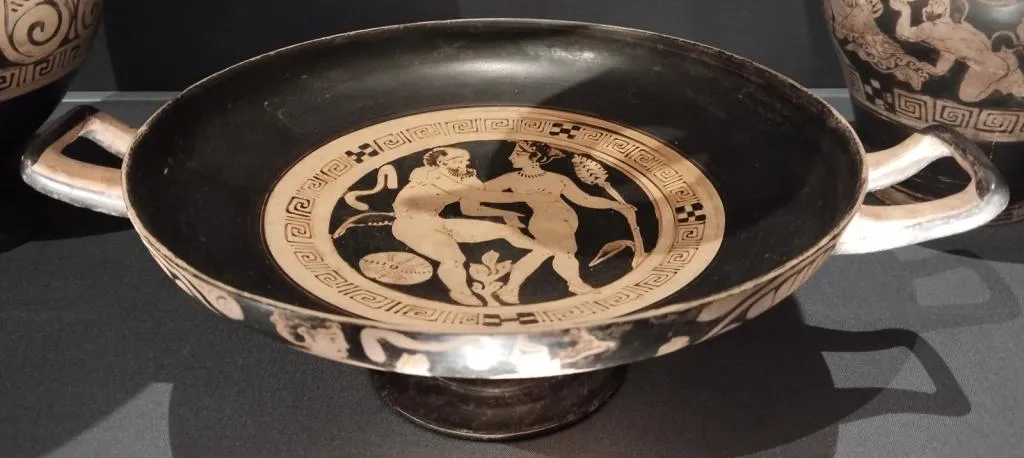
Source: by Stable MARK - own work.
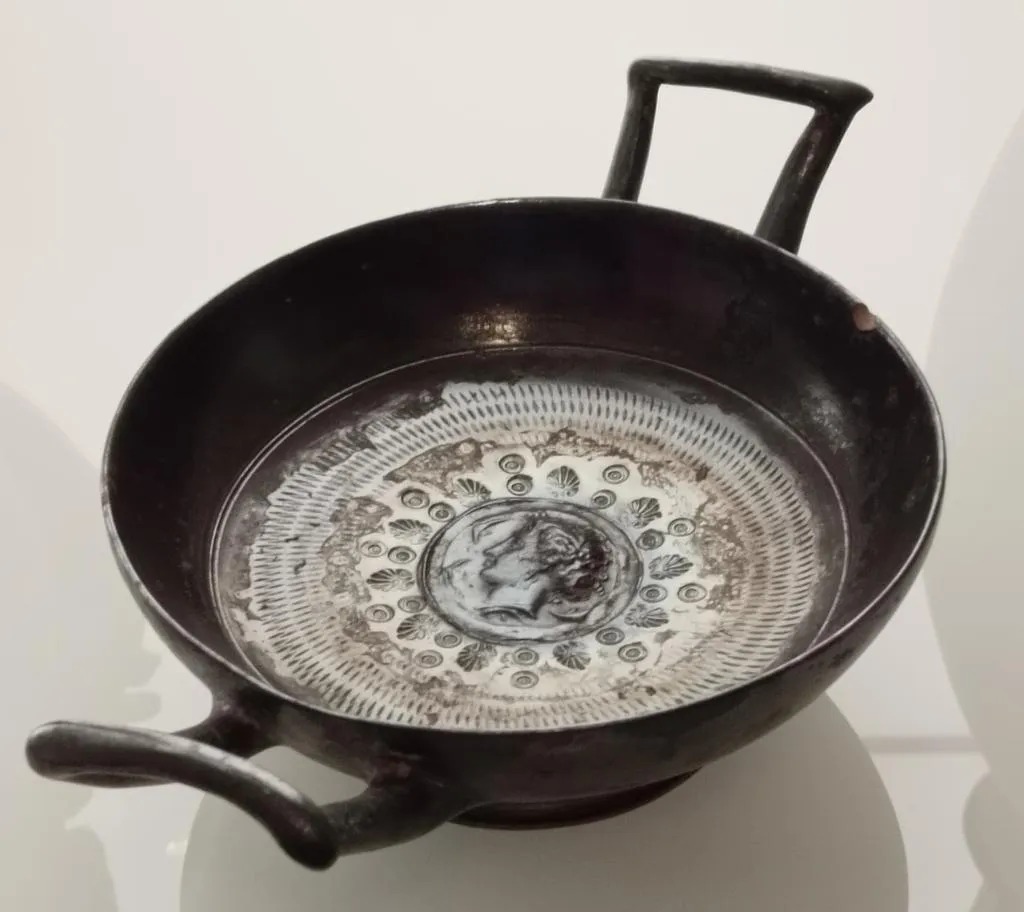
Source: by Stable MARK - own work.
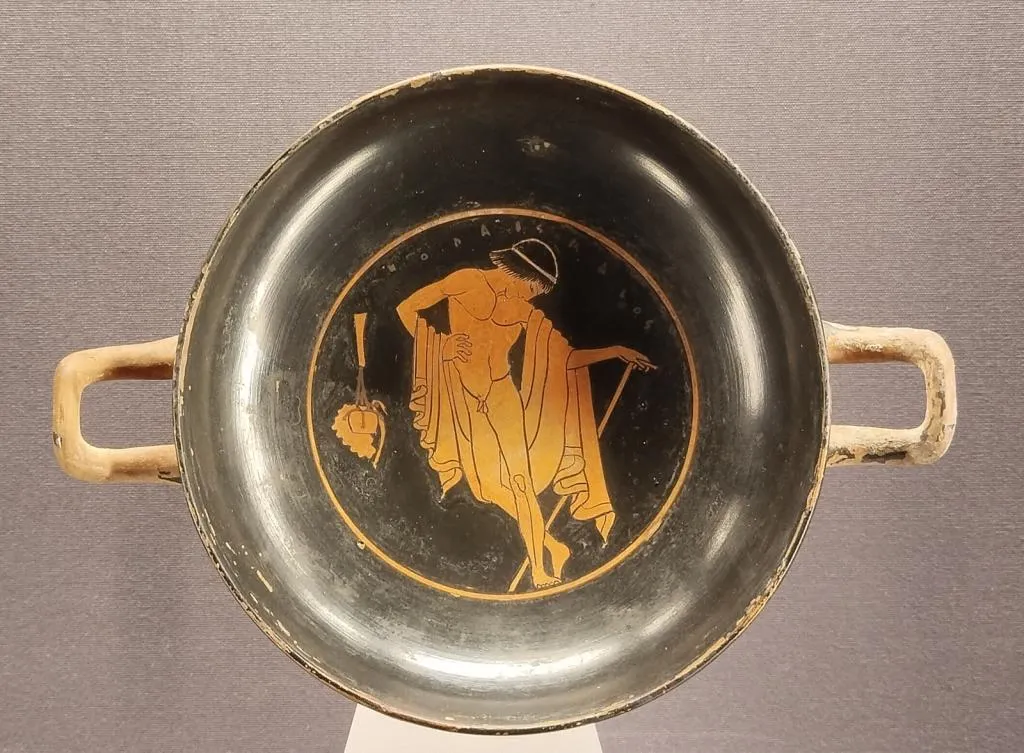
Source: by Stable MARK - own work.
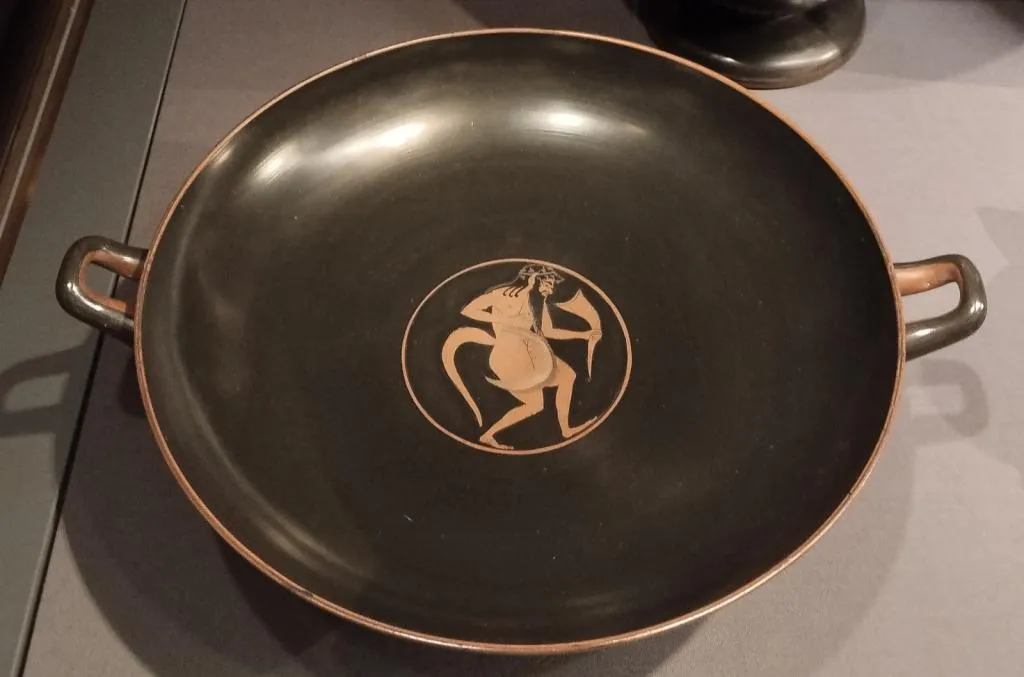
Source: by Stable MARK - own work.
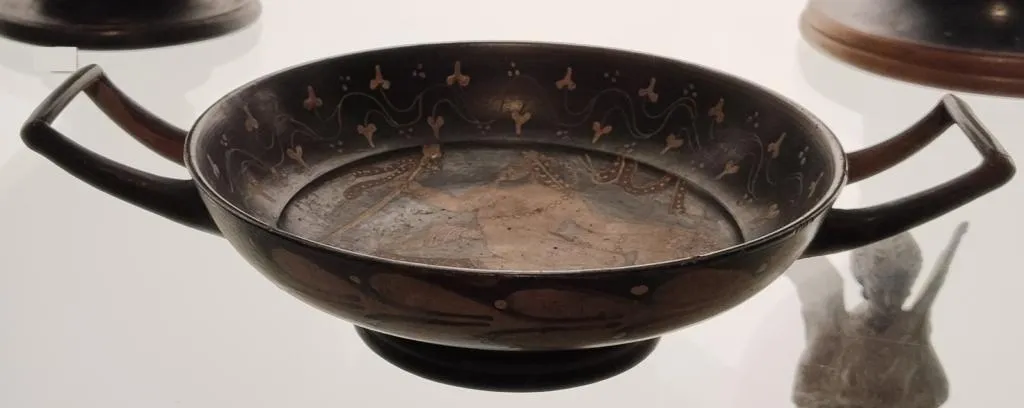
Source: by Stable MARK - own work.
Share this article












